
Right now they are tomato-red, tomato-shaped vegetable products.
Greenhouse grown, look like tomatoes but do not taste anything like
.
If you have any comments, observations, or questions about what you read here, remember you can always Contact Me
All content included on this site such as text, graphics and images is protected by U.S and international copyright law.
The compilation of all content on this site is the exclusive property of the site copyright holder.
Garden Styles: Vegetables in the Garden
Monday, 7 March 2022
What's in a name. Say "vegetable garden," and anyone in the discussion has an understanding of the concept. Not that vegetable gardens are a one size fits all concept.
Last year there was an excellent program at the Bouman Stickney Museum in Readington Township. Lenape Lifeways had an interesting focus on the foods of the Native Americans living here before European settlements. Foraging and gardening, especially corn, puhwem and blue corn. Some Internet sleuthing, and I discovered that TrueLove Seeds, a Pennsylvania farm-based seed company offers a very nice selection of culturally important and open pollinated vegetable, herb, and flower seeds, including Lenape puhwem and blue corn.
Fast forward from last October to now, and looking forward into next June. This summer, from June 4 through September 11, 2022 the New York Botanical Garden will feature "Around the Table: Stories of the Foods We Love." The media release mentions that the event will explore the art and science of foodways and food traditions, many dating back thousands of years. Visitors will have the opportunity to explore the diverse cultural history of what we eat, and learn that plants are at the base of all culinary customs, from global dietary staples such as rice, beans, squash, and corn to the regional spice and flavor provided by peppers, greens, and tomatoes.
Displays of living edible plants, art and science installations, weekend celebrations, and wellness and culinary-themed programming will provide opportunities to discover the diversity and beauty of plants that are grown for cuisine around the world; uncover the botanical origins of the foods people think they know, cultivate deeper understanding of the environmental and social impacts of food choices, and invite gathering at artist-designed tables set throughout NYBG's 250 acres, bringing to life stories about the featured and other notable edible plants.
What's more, the Shop at the New York Botanical Garden is offering a diversity of seeds that are difficult to find, sourced from many different companies. And yes, one of those will be TrueLove Seeds.
You might think this is all very interesting but unnecessary. After all, (setting aside Covid-19 empty shelf syndrome) vegetables are available year round, regardless of the season. There is, however, an unfortunate focus where appearance and shipability are more important than flavor. Case in point, one old seed catalog I was perusing mentioned a cabbage variety that it could be kicked to market and still arrive in saleable condition.
Tomatoes are available in the stores year-round.

Right now they are tomato-red, tomato-shaped vegetable products.
Greenhouse grown, look like tomatoes but do not taste anything like
 .
.
those we get in the summer, dripping with juice, bursting with flavor from the first bite.
Of course once upon a time tomatoes (member as they are of the nightshade family)

were believed poisonous, grown just as ornamentals. Now we eat them with delight
and only rarely are they used in arrangements, as here adding bright color on a mantle.
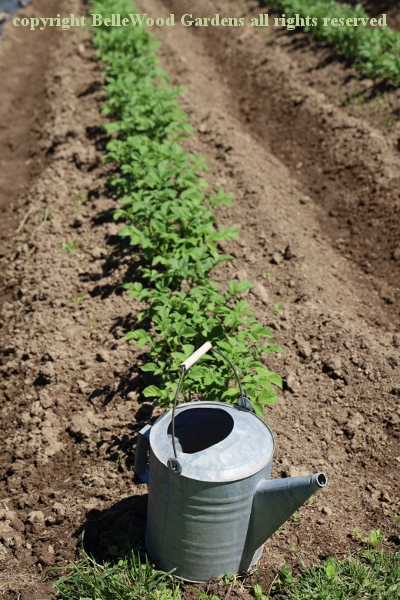
A vegetable garden can be a functional, productive place to grow
any / every thing from asparagus to zucchini. Vegetables may also
be grown together with herbs and perennials, cottage garden style.
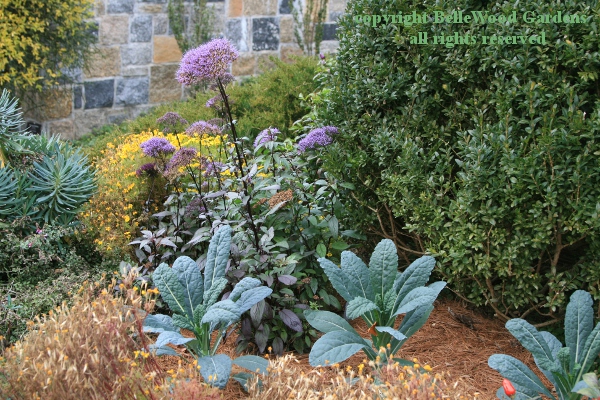
Nero di Toscano or dinosaur kale has a wonderfully wrinkled, rugose leaf.
Cold tolerant, it is excellent for culinary uses. I like it more than other kinds.
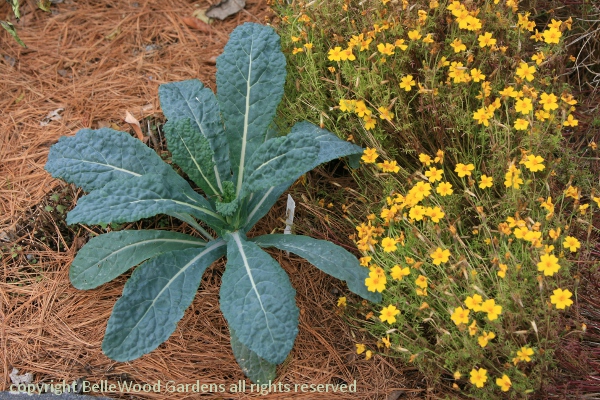
Have you ever thought of cabbage as anything other than food. Of course
there's coleslaw, sauerkraut, stuffed cabbage. Bring it out of the kitchen,
and into the garden, into the garden and use as something ornamental?

Savoy cabbage with its crinkled leaves paired with euphorbia or pulmonaria.
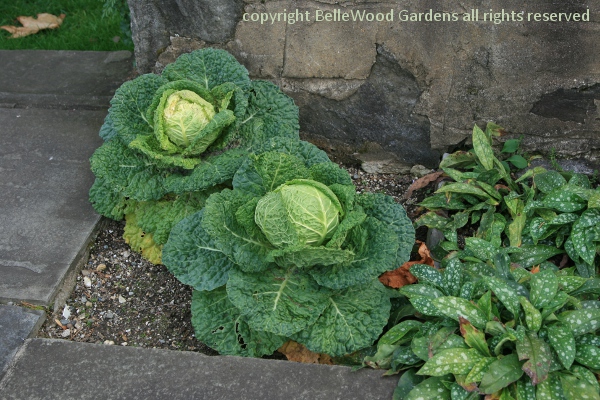
Back in 2009 there was an Edible Garden exhibit at the New York Botanical Garden.
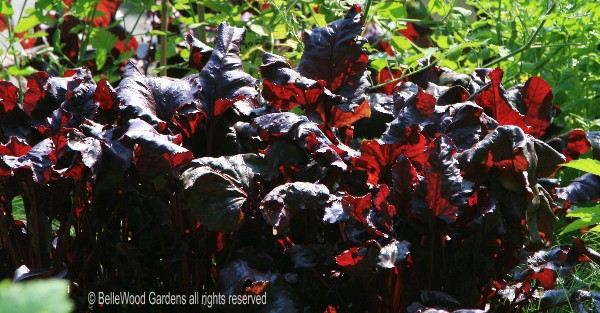
Edibility and ornamental are two different, non-exclusive characteristics.
Consider 'Bulls Blood' beets, with their deeply colored edible, attractive
leaves and the underground beetroot. A case of having it and eat it also.
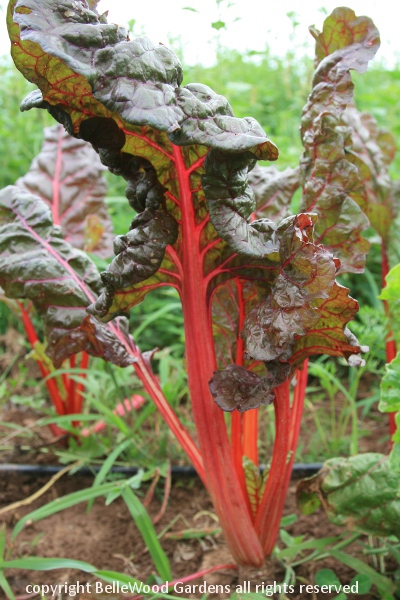
Swiss chard typically has a white midrib but there are variations, from rose red
to really red to golden yellow. Grow in a pot or in the ground, cut a few and cook.
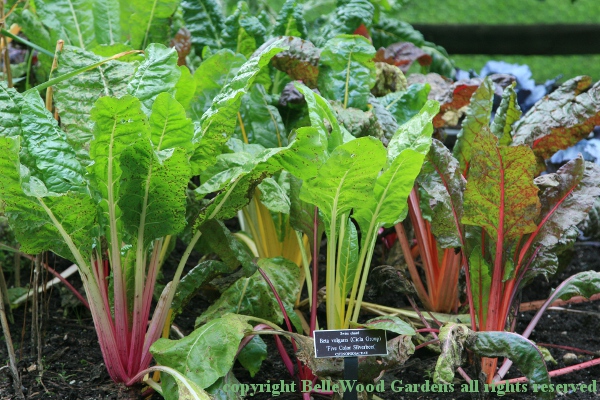

A pod of green peas, sweet enough to eat raw, right out of the pod.
Peas, inspiration for the cook and also for the artist, as you can see

with a pod of peas sculpted with a chain saw by Greg Napolitan.
A seat at the table, yes. But first comes the garden and the kitchen.
Back to March
Back to the main Diary Page